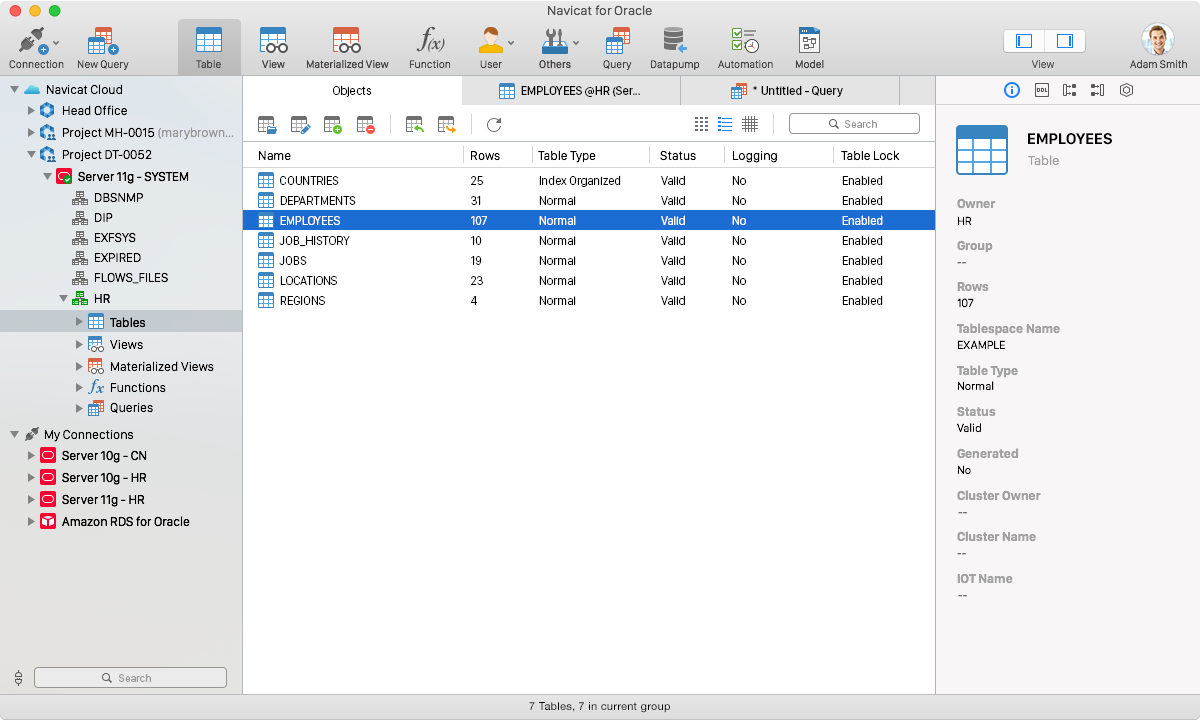

- #ORACLE CLIENT FOR MAC MAC OS X#
- #ORACLE CLIENT FOR MAC DRIVERS#
- #ORACLE CLIENT FOR MAC DRIVER#
- #ORACLE CLIENT FOR MAC ARCHIVE#
- #ORACLE CLIENT FOR MAC FULL#
Passes the full path to directories, which contain executables. Passes the full path to the openlink.ini file, which resides in the OpenLink /bin sub-directory. Passes the full path to the odbcinst.ini file, which resides in the OpenLink /bin sub-directory. Passes the full path to the odbc.ini file, which resides in the OpenLink /bin sub-directory.

This variable must include the OpenLink /lib sub-directory. Passes the full path to various library directories on Darwin computers. This variable is not required for ODBC connectivity. These files comprise the OpenLink JDBC client.
#ORACLE CLIENT FOR MAC ARCHIVE#
Passes the full path to OpenLink's Java archive (.jar) files. The following table lists environment variables, which must be set on Darwin clients. Users do need to set environment variables on Darwin.
#ORACLE CLIENT FOR MAC MAC OS X#
Users do not need to set environment variables on Mac Classic and Mac OS X operating systems.
#ORACLE CLIENT FOR MAC DRIVERS#
Use of these drivers requires knowledge of the following items:Įnvironment variables pass the locations of files and directories, which the operating system or applications need to accomplish tasks.
#ORACLE CLIENT FOR MAC DRIVER#
OpenLink Software provides two ODBC driver formats. In some instances, a symbolic link is created, which uses a driver manager library name to point to an ODBC driver library. ODBC connectivity is possible, in the absence of a driver manager, if the client application is linked directly to the ODBC driver. ODBC Driver Architecture without Driver Managerįigure 1-2 illustrates ODBC connectivity without a driver manager component. The default architecture employs both a driver manager and ODBC drivers. ODBC Driver Architecture with Driver Managerįigure 1-1 illustrates the default architecture for ODBC connectivity. This data source passes a driver name, database name, server hostname, and other parameters, which are necessary to identify a database or similar storage entity. Second, data source refers to the collection of parameters that applications use to establish connections to data stores. The term data source has two, distinct meanings.įirst, data source refers to the actual flat files, spreadsheets, or database management systems, which store data. In this instance, driver libraries perform driver manager library functions. However, applications may be linked directly to drivers. Typically, applications are linked against driver managers, which load the appropriate driver libraries. These libraries implement ODBC API functions, which enable applications to speak to databases. Users may also encounter unixODBC, mac:ODBC, and other driver managers. Apple's Jaguar installer provides an iODBC dylibs-based driver manager. OpenLink's default Mac OS X client installer provides an iODBC frameworks-based driver manager. Users may also encounter another driver manager created by Visigenic and maintained by Intersolv, Merant, and Data Direct respectively. OpenLink's Mac Classic client installer provides its own driver manager for this platform. OpenLink's Darwin client installer provides the iODBC driver manager. Users may encounter the following driver managers on Mac client systems: Platform When the applications complete their requests, the driver manager terminates the connections and unloads the drivers. Once the drivers are loaded, the driver manager translates applications' function calls into the corresponding ODBC API calls, and it issues these calls to the drivers.

It responds to all ODBC connection requests made by applications, and it loads the ODBC drivers that are associated with the requests. The driver manager is a library, which manages communications between applications and ODBC drivers. These calls enable the application to connect to the data store and query the data store via the ODBC driver. These API calls are implemented by ODBC drivers that are customized for use with the data store. ODBC-compliant applications are executables, which issue ODBC API calls. Most end users use ODBC-compliant applications to access their data stores. ODBC data access comprises the following, four components: Application



 0 kommentar(er)
0 kommentar(er)
